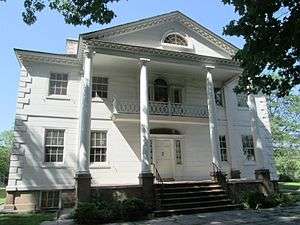Upper Manhattan
Upper Manhattan denotes the most northern region of the New York City Borough of Manhattan. Its southern boundary has been variously defined, but 96th Street, the northern boundary of Central Park at 110th Street, 125th Street or 155th Street are some common usages.
Upper Manhattan is generally taken to include the neighborhoods of Marble Hill, Inwood, Washington Heights (including Fort George, Sherman Creek and Hudson Heights), Harlem (including Sugar Hill, Hamilton Heights and Manhattanville), and parts of the Upper West Side (Morningside Heights and Manhattan Valley).
In the late 19th century, the IRT Ninth Avenue Line and other elevated railroads brought urban sprawl to the previously rustic Upper Manhattan. Until the late 20th century it was less influenced by the gentrification that had taken place in other parts of New York over the previous 30 years.
Like other residential areas, Upper Manhattan is not a major center of tourism in New York City, although some tourist attractions, such as Grant's Tomb, most of Riverside Park, the Apollo Theater, Fort Tryon Park and The Cloisters, Sylvia's Restaurant, the Hamilton Grange, the Morris–Jumel Mansion, Minton's Playhouse, Riverbank State Park, Sakura Park, Sugar Hill, Riverside Church, the National Jazz Museum in Harlem and the Dyckman House lie within it.
Gallery
 The Cloisters in Fort Tryon Park houses the medieval art collection of the Metropolitan Museum of Art
The Cloisters in Fort Tryon Park houses the medieval art collection of the Metropolitan Museum of Art The Little Red Lighthouse under the George Washington Bridge. The bridge connects Washington Heights in Upper Manhattan across the Hudson River to Fort Lee, New Jersey, and is the world's busiest motor vehicle bridge.[1][2]
The Little Red Lighthouse under the George Washington Bridge. The bridge connects Washington Heights in Upper Manhattan across the Hudson River to Fort Lee, New Jersey, and is the world's busiest motor vehicle bridge.[1][2] Inwood Hill Park contains the last remnant of the primeval forest which once covered Manhattan; these caves were used by native Lenape people
Inwood Hill Park contains the last remnant of the primeval forest which once covered Manhattan; these caves were used by native Lenape people
See also
References
- ↑ "Port Authority of New York and New Jersey - George Washington Bridge". The Port Authority of New York and New Jersey. Retrieved September 13, 2013.
- ↑ Woodruff, Bob; Zak, Lana & Wash, Stephanie (November 20, 2012). "GW Bridge Painters: Dangerous Job on Top of the World's Busiest Bridge". ABC News. Retrieved June 6, 2016.
Coordinates: 40°47′49″N 73°56′56″W / 40.797°N 73.949°W

